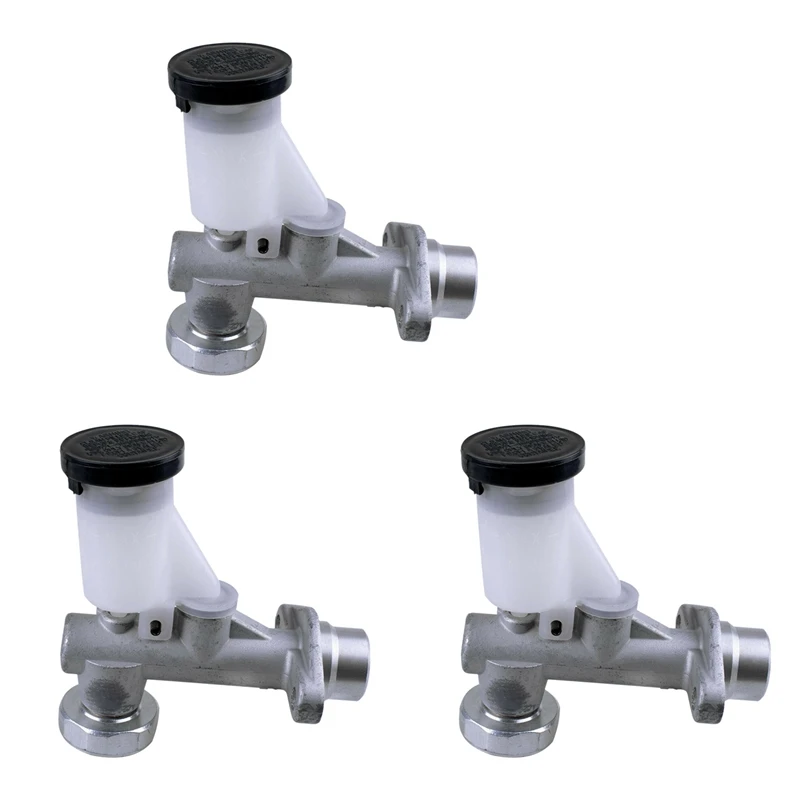Lectrosonics SRc5P Dual-Channel Slot-Mount ENG Receiver, A1: 470.1-537.5MHz
Опис
Over the years, Lectrosonics has earned a reputation for delivering high-quality, reliable, and innovative audio equipment. The SRc5P Dual-Channel Slot-Mount ENG Receiver, A1: 470.1-537.5MHz, is no exception. This advanced device is designed with two separate receivers, each housed within a single, ultra-compact unit. It's compatible with video camera receiver slots and can also be used as a standalone device.The SRc5P employs Digital Hybrid Wireless technology, ensuring superb, compandor-free audio quality and compatibility with other wireless systems. Its RF performance remains stable over a wide temperature range, making it an ideal choice for field production where environmental conditions can be challenging.This receiver is designed with DSP compatibility modes, allowing it to work seamlessly with various Lectrosonics systems, other brands of wireless systems, and Lectrosonics IFB transmitters. The front panel features a user-friendly, menu-driven LCD interface, and four membrane switches for viewing and altering settings.The SRc5P offers a wide frequency range of 470.1-537.5 MHz, providing greater versatility and compatibility with different types of equipment. It also includes a built-in spectrum analyzer that scans across the tuning range of the receiver, displaying a histogram of RF activity across the band. This feature makes it easy to identify areas with little or no RF activity.The two internal receivers can be operated separately or in tandem with ratio diversity reception. The audio outputs of the receivers can be mixed internally or left separated for discrete recording tracks or external mixing. The SRc5P model provides a 5-pin connector next to the control panel with audio output from both channels in addition to the camera slot outputs.The SRc5P Dual-Channel Slot-Mount ENG Receiver is powered from an external 7 to 18 volt DC source. It's designed with a variety of output adapters and mounting options for camera slot operation. This receiver is a testament to Lectrosonics' commitment to delivering durable, high-quality, and reliable audio equipment for the film, television, and music industries.
Графік зміни ціни & курс обміну валют
Користувачі також переглядали

€ 66.60
For Peugeot 307 2008-2013 car accsesories headlamp assembly 6-wire manual 8-wire electric adjustment
aliexpress.com
€ 15.89
Men Women Vintage Washed T-shirts Bombardiro Crocodilo Crocodile Plane Bomber Print Shirt Outfit High Street Tees Tops
aliexpress.com
€ 35.93
3X главный цилиндр сцепления для Nissan Patrol GU Y61 TD42 TB45 TB48 ZD30 RD28 1997-19
aliexpress.ru
€ 43.05
Damyuan Мужская повседневная обувь Удобные кроссовки Дышащие кроссовки для бега для мужчин Сетчатые теннисные спортивные туфли Кроссовки для ходьбы 6 чёрный
joom.com
€ 13.94
3 шт. детской одежды, осенне-зимняя одежда для ползания, новый экспорт, детская одежда, весенняя детская сумка с героями мультфильмов, пердежи
aliexpress.ru
€ 15.48
Женская футболка с рождественским принтом на пуговицах с длинным рукавом, повседневная, выходного дня, модная, базовая, с V-образным вырезом, обычная L
joom.com
€ 4.26
Универсальный держатель управления круиз-контролем CNC для мотоцикла торжественный уличный мотоцикл
aliexpress.com
€ 23.22
Портативный светильник для кемпинга с регулируемым телескопическим стержнем 1,8 м, светодиодный светильник для селфи, светильник для фотосъемки со штативом для кемпинга
aliexpress.ru
€ 17.55
Fitness Hand Ring Household Pull-up Spine Traction Adult Stretching Training Exercise Equipment
aliexpress.com
€ 15.57
Элегантные африканские вечерние платья для женщин осень с длинным рукавом V-образным вырезом облегающее Сексуальное Тонкое длинное платье Модные свадебные платья
aliexpress.ru
€ 43.84
Турецкий кофейный сервиз с подносом для чашек, сервировочный сервировочный сервиз для чая, свадебный роскошный винный сервиз, европейский винный сервиз для украшения вечеринки, спальни
aliexpress.ru
€ 19.34
3* Flexible Rods 10FT Chimney Cleaning Brush Tool Parts Fireplace Flue Sweep Whip Cleaner Tool For Household Cleaner Accessories
aliexpress.com
€ 7.19
Ok Print Men's Quick Dry Moisture-wicking Breathable Tank Tops Athletic Gym Bodybuilding Sports Sleeveless Shirts For Workout Running Training Men's Clothes
temu.com
€ 216.42
Зимний утепленный цельный лыжный костюм для женщин, теплый комбинезон для сноуборда, ветрозащитная Водонепроницаемая дышащая одежда, лыжный костюм
aliexpress.ru
€ 10.77
10 Pcs Coffee Machine Cleaning Set Coffee Grinder Brush Coffee Machine Group Head Cleaning Brush
aliexpress.com
€ 7.44
Мужская клетчатая рубашка в английском стиле, джемперы, модные мягкие удобные мужские рубашки, весна-осень 2024, уличная одежда, простые искусственные мужские рубашки
aliexpress.ru
€ 11.27
Железный цветочный горшок, Настольная декоративная ваза, металлический контейнер для композиции, организация цветов
aliexpress.com
€ 37.99
2023 Women's New Knitted Cardigan Mink wool Top Navy Style Sweater V-neck Single breasted High Street Style Japanese Korean Top
aliexpress.com
€ 17.57
Лодочный двигатель 69L-45371-00 18-6122Z, внутренний анод для Yamaha, подвесной мотор 200HP 225HP 250HP 300HP
aliexpress.ru
€ 23.87
CHICEVER для похудения темпераментные футболки для женщин с вырезом лодочкой и длинным рукавом с открытыми плечами Минималистичная сплит Футболка Женская Новинка 2023
aliexpress.ru
€ 2.15
1PCS ASIA/USA/EUR Version NPG73/GPR57/EXV53 Toner Chip for Canon imageRUNNER ADVANCE 4525/4535/4545/4553
aliexpress.ru
€ 5.00
12V Quick Charge Socket Voltmeter Switch Waterproof 36W 6A Dual USB Outlet Fast Charger for 12V Car Boat Motorcycle Truck Golf
aliexpress.com
€ 12.47
Car Cleaner Spray Non Greasy Polishing Spray Crystal Wax Spray Automotive Quick Detailing Agent Removes Dirt Dust And Grime
aliexpress.com
€ 48.25
Acrylic Transparent Angle Side Table 2-layer Storage Trolley Shelf Sofa Bedside Movable Silent Universal Wheel Simple Snacks Ins
aliexpress.com
€ 877.59
Plate Heat Exchanger Water Milk Juice Pasteurizer Gasket Price Plates, R410a Plate Heat Exchanger
aliexpress.com
€ 2.17
Korean Fake Collar for Women White Lace Hollow Out Detachable Collar Shawl Wrap White Lapel Bowknots False Collar
aliexpress.com
€ 25.57
Декоративный коврик Taijs factory нового дизайна для автомобильной приборной панели, используется для Suzuki liana 2011-2013, левый руль, автомобильная приборная панель, светильник
aliexpress.ru
€ 319.73
Treadmill for Pet Alternator Training Wheel for Cats Gym Interactive Cat Toy Cat Scratch Board Games Tunnel Cave Pet Products
aliexpress.com
€ 6.75
2P Voltage Protection Arrester Protector 20kA 220V YXM8-20 Voltage Arrester Protective Device
aliexpress.com
€ 0.55
1PCS Barber Cleaning Hairbrush Hair Sweep Brush Hairdressing Neck Face Duster Brushes Soft Haircut Styling Tool
aliexpress.com
€ 2.34
Fashion Women Shoes Charms Colorful Beads Chain For Shoes Decoration Smiley Beaded Accessories Trend Letter Gift Jewelry New
aliexpress.com
€ 19.73
Plus Size Solid V-Neckline Casual Sweater Long Sleeve Plus Size Sweaters&Cardigans (30375805908) - W, White
floryday.com
€ 21.54
Flat Bike Pedals MTB Road 3 Sealed Bearings Bicycle Pedals Mountain Bike Pedals Wide Platform pedales bicicleta mtb accessories
aliexpress.com
€ 7.11
Стиральный порошок TOPPERR Activ, автомат, 1.5кг, белое и цветное белье, концентрат, Activ
citilink.ru












